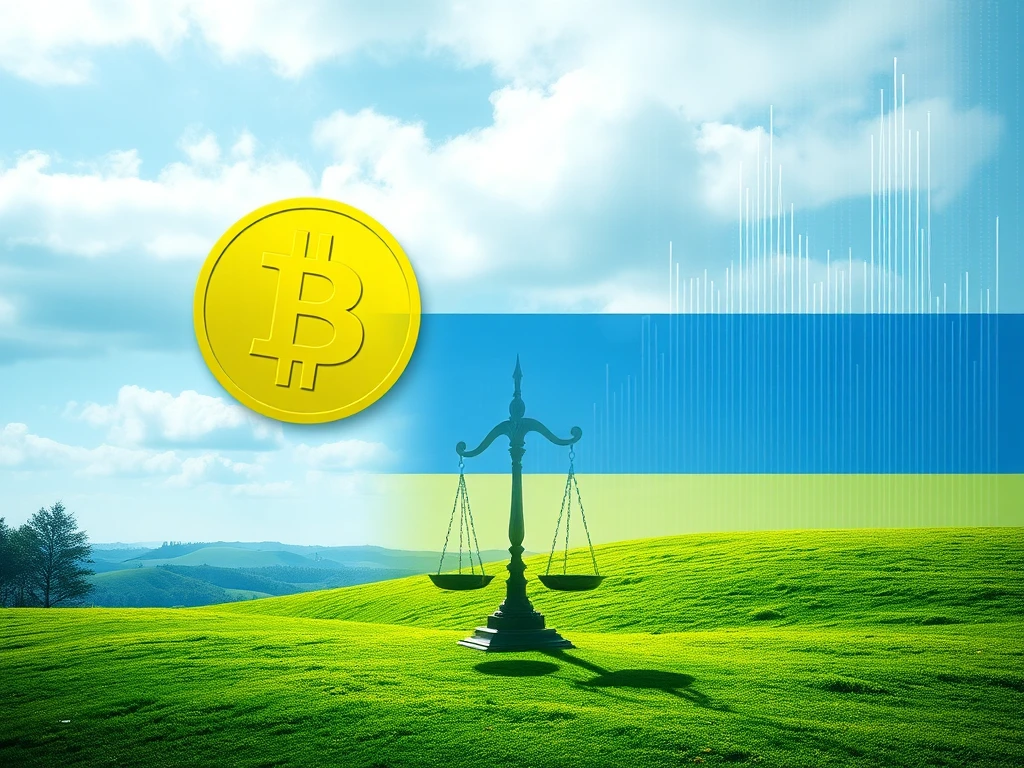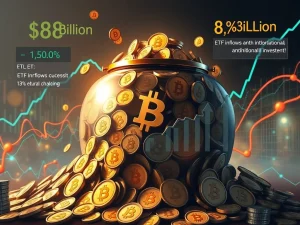Urgent Bitcoin News: Ukraine Eyes Crypto Reserves, US Advances Regulation

Staying informed in the fast-paced world of cryptocurrency is crucial. Today brought several key developments impacting the market, from potential state-level adoption to significant protocol changes and ongoing efforts towards clear crypto regulation. Let’s dive into the essential Bitcoin news and other headlines shaping the digital asset landscape.
Ukraine’s Bold Move: Considering Bitcoin Reserves
In a significant development for potential state-level crypto adoption, Ukrainian lawmakers have introduced a draft bill aimed at allowing the National Bank of Ukraine (NBU) to potentially include cryptocurrencies, such as Bitcoin, in the nation’s reserves. The bill, numbered 13356 and submitted to the Verkhovna Rada (parliament), proposes amendments to the existing law governing the NBU, placing crypto assets alongside traditional reserves like gold and foreign currencies.
Here are the key takeaways:
- The bill grants the NBU the *authority* to acquire crypto assets, but does not *mandate* it.
- The central bank would retain full discretion on if, when, and how much crypto to allocate to reserves.
- Parliament member Yaroslav Zhelezniak confirmed the bill’s introduction, emphasizing the NBU’s decision-making power.
- Lawmakers view this step as integrating Ukraine crypto policy into global financial innovation trends.
While the final decision rests with the NBU, this legislative step signals a forward-thinking approach from Ukrainian authorities regarding digital assets and their potential role in national finance.
A Divisive Bitcoin Update: Increasing Data Limits
A planned Bitcoin update, specifically Bitcoin Core 30 slated for October 30, is set to increase the data limit on the OP_RETURN function. This function, famously utilized by the Ordinals protocol to embed data like images and text onto the Bitcoin blockchain, currently has an 80-byte limit. The proposed change would raise this limit significantly, allowing up to 4 megabytes of data per output.
This technical change has ignited debate within the Bitcoin community:
- Proponents argue it expands Bitcoin’s potential use cases beyond just financial transactions.
- Critics contend that allowing larger data inscriptions clogs the blockchain, effectively using it as storage and potentially increasing transaction fees for standard payments.
- Bitcoin Core developer Gloria Zhao stated that developers favor a neutral stance, allowing users flexibility in how they utilize the chain, rather than imposing restrictions on specific transaction types.
This highlights the ongoing tension between different visions for Bitcoin’s future – a minimalist peer-to-peer cash system versus a more versatile platform for various data types.
US Advances Crypto Regulation Efforts with CLARITY Act
In the United States, efforts towards establishing a clear regulatory framework for digital assets continue. The House Agriculture Committee recently voted overwhelmingly in favor of the Digital Asset Market Clarity Act, or CLARITY Act, with a vote of 47-6. This bill aims to provide clearer rules for digital asset companies operating in the US.
Key aspects of the US crypto bill include:
- Establishing a regulatory framework specifically for digital assets.
- Clarifying whether certain digital assets fall under the jurisdiction of the Securities and Exchange Commission (SEC) or the Commodity Futures Trading Commission (CFTC).
- Committee Chair GT Thompson indicated the bill will proceed to the House for further consideration.
This move by the Agriculture Committee occurred concurrently with related discussions in the House Financial Services Committee regarding potential amendments, such as adding protections for blockchain developers. The CLARITY Act, first introduced in May, is seen by sponsors as a crucial step towards providing legal certainty and fostering innovation in the US digital asset market, alongside other legislative efforts like the Senate’s expected vote on the GENIUS Act concerning stablecoins.
Summary
Today’s crypto landscape saw significant movement on multiple fronts. Ukraine’s legislative step towards potentially holding crypto reserves signals growing interest in digital assets at the state level. The upcoming Bitcoin update regarding data limits continues to be a point of contention, reflecting diverse views on the network’s purpose. Meanwhile, the US Congress made headway in its push for clear crypto regulation with the advancement of the CLARITY Act. These developments underscore the increasing integration of cryptocurrencies into global finance and policy discussions, highlighting the dynamic nature of the industry.









